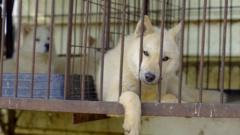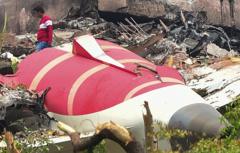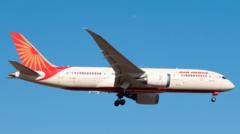In the wake of the devastating crash of Jeju Air Flight 2216 that occurred last December, South Korea's government announced a comprehensive strategy to bolster aviation safety. The initiative, prompted by the deadliest aviation incident in the nation's history, includes deploying drones to monitor and manage bird populations around airports. These measures aim to mitigate risks associated with bird strikes, which were highlighted as a factor in the crash's tragic outcome.
South Korea to Implement Drone Technology for Bird Strike Prevention

South Korea to Implement Drone Technology for Bird Strike Prevention
As part of new aviation safety measures, South Korea plans to use drones to deter birds after a tragic air crash claimed 179 lives.
Authorities revealed that the Jeju Air flight had reported a bird strike while descending into Muan International Airport, ultimately leading to a catastrophic landing where the aircraft slid off the runway and collided with a concrete barrier. The government's response incorporates plans to enhance airport infrastructure at six critical locations, introduce measures to address pilot fatigue, and expand the workforce of safety supervisors.
Investigators continue to probe the causes of the crash, although evidence of bird remnants was discovered in the engines. Moreover, concerns have been raised regarding the structural integrity of the airport’s localizer, which may have exacerbated the incident. To enhance safety protocols, the transport ministry will begin trials for drones in early 2026, and by the end of next year, they hope to equip them with capabilities to identify birds and deploy repellents to discourage their presence.
The use of drones to protect against wildlife near flight paths is an established practice globally, showcasing the importance of adopting innovative technologies to improve aviation safety. Plans for the implementation of bird-repelling drones will continue over the next few years to ensure a safer flying environment for both passengers and crew.
Investigators continue to probe the causes of the crash, although evidence of bird remnants was discovered in the engines. Moreover, concerns have been raised regarding the structural integrity of the airport’s localizer, which may have exacerbated the incident. To enhance safety protocols, the transport ministry will begin trials for drones in early 2026, and by the end of next year, they hope to equip them with capabilities to identify birds and deploy repellents to discourage their presence.
The use of drones to protect against wildlife near flight paths is an established practice globally, showcasing the importance of adopting innovative technologies to improve aviation safety. Plans for the implementation of bird-repelling drones will continue over the next few years to ensure a safer flying environment for both passengers and crew.






















